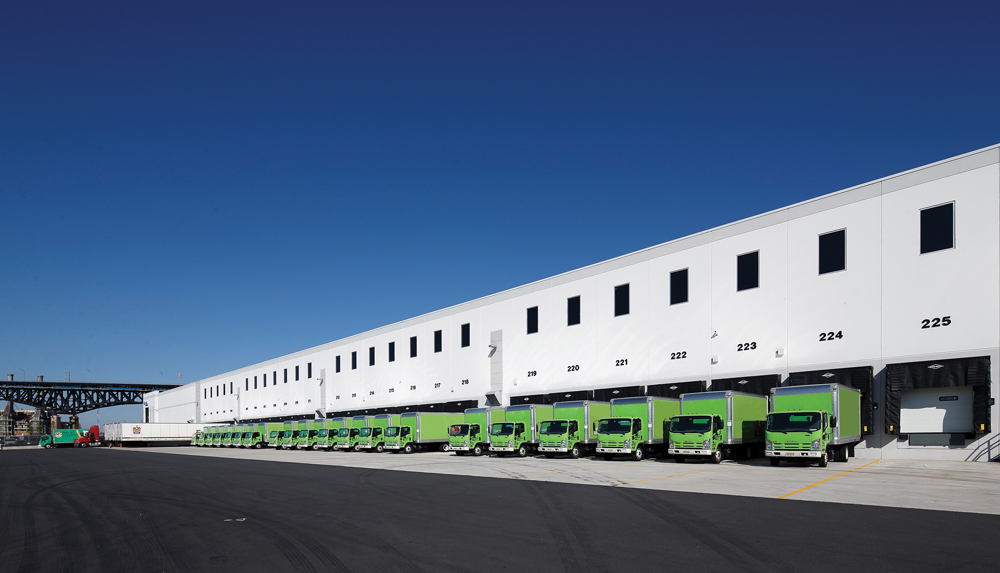
FROM TOXIC TO TREMENDOUS
As specialists in industrial warehouses, repositioning environmentally impacted sites has become a core component of RC Andersen’s expertise. These sites are typically labeled as as “deed restricted” and in some cases “Superfund” sites, which are severely contaminated areas that the United States Environmental Protection Agency (EPA) has designated for hazardous material remediation. However, even the RC Andersen team acknowledges that remediation is no easy feat— it takes diligent coordination with developers, local and state authorities, design professionals, and qualified subcontractors to install mitigation systems underground and, at times, inside the new building to ensure the environmental health and safety of future occupants.
Located in Jersey City, New Jersey, the Ports Distribution Center, completed in 2014 by RC Andersen, is an example Superfund project site. According to Craig Davenport, senior vice president at RC Andersen, the property was a former landfill and included in the EPA’s Superfund list. “On this specific project, the New Jersey Department of Environmental Protection executed a large clean-up of the site in the 1980s,” Davenport says. “They successfully removed the majority of the toxic material that had been left there illegally for decades.”
SAFETY IS KEY
But a concerning level of contamination still remained when construction of the Pulaski building began, especially for the mass earthwork and excavation phases. In coordination with the project’s environmental design professionals, RC Andersen’s team developed a health and safety plan that required all underground, site, soil, and excavation work to be completed under a level C HAZMAT requirement. Teams were required to wear Tyvek suits, rubber boots, gloves, and respirators with constant air monitoring taking place. As mass earthwork progressed throughout the property, there was a coordinated effort to maintain and secure exclusion, decontamination, and safe zones until such time the site was properly capped.
“From an all-encompassing environmental and geotechnical standpoint, this was the most challenging site we have worked on,” says Davenport.
But, he says, with these challenges comes an even stronger sense of accomplishment. He notes that the most exciting part of these projects is the collaboration with owners and developers who are looking to revive a property that would otherwise languish boarded up or enclosed by a metal fence.
“We’re certainly glad that we have partners and clients who rely on us to enter into challenging sites and not only transform them into entirely new state-of-the-art buildings, but also improve the economy within that particular neighborhood.”